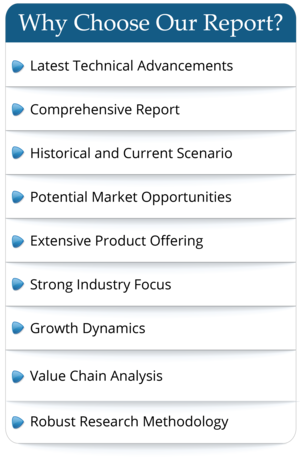Global Oil Well Cement Additive Market Professional Survey by Types, Applications, and Players, with Regional Growth Rate Analysis and Development Situation, from 2023 to 2028
SKU ID : Maia-25380198 | Publishing Date : 25-Oct-2023 | No. of pages : 98
Oil well cement is used in drilling oil and gas wells. Oil well cement is used for oil well grouting, sometimes referred to as oil well cementing. It consists of Portland cement or mixed cement plus additives. Oil well cement must be slowly set and able to withstand the high temperatures and pressures of these deep wells. This process plays an important role in drilling operations. The cement is mixed with water and additives to form a slurry which is then pumped into a well around the casing, which is a large tube inserted into a new borehole.
Drivers
With the development of economy and industrial technology, the production technology of Oil Well Cement Additive is gradually stable, and the production capacity of the industry is gradually increasing. Oil Well Cement Additive has a potential consumer market in these countries with the continued development and promotion of downstream applications.
Europe is the largest market for Oil Well Cement Additive, with advanced research and development technologies and products with good purity and quality.
As an economically developed region, the United States has diversified distribution channels and high-end research and technology.
With the continuous development of economy and industry, the Asia-Pacific region has developed rapidly in the Oil Well Cement Additive market, the industry chain has gradually improved, and industry technology is constantly evolving. This is a potential consumer market.
Limitations
Increasing environmental pollution
Due to the chemical nature of some additives, there are certain hazards to the environment and the human body. As well as the downstream application industry of oil well cement additives, the oil and natural gas industries have a bad influence on the environment. The global environmental pollution problem has become more and more serious. For chemical industries, many countries have strict environmental protection regulatory policies, especially in Europe, America, and Japan. Emerging countries such as China are also increasingly focusing on environmental issues.
Trade protection policy
By imposing high tariffs trade wars may happen at any time between countries and countries, for example in the recent US Trump administration imposes higher tariffs on imported products.
Region Overview:
Europe had the highest growth rate of all regions.
Company Overview:
BASF is one of the major players operating in the Oil Well Cement Additive market, holding a share of 13.15% in 2018.
BASF SE operates through five segments: Chemicals, Performance Products,
Functional Materials & Solutions, Agricultural Solutions, and Oil & Gas. The Chemicals segment offers solvents, plasticizers, monomers, and glues, as well as raw materials for detergents, plastics, textile fibers, paints and coatings, crop protection products, and medicines. The Performance Products segment provides dispersions and pigments, care chemicals, nutrition and health products, and performance chemicals that are used in pharmaceuticals, personal care products, and cosmetics, as well as hygiene and household products.
Sika AG, a specialty chemicals company, develops, produces, and sells systems and products for bonding, sealing, damping, reinforcing, and protecting in the building sector and motor vehicle industry worldwide. It develops and markets various admixtures and additives for use in concrete, cement, and mortar production; and single-ply and built-up flat roofing systems.
Segmentation Overview:
Among different product types, Fluid Loss Additives segment is anticipated to contribute the largest market share in 2027.
Application Overview:
By application, the Oil Well segment occupied the biggest share from 2017 to 2022.
This report elaborates on the market size, market characteristics, and market growth of the Oil Well Cement Additive industry between the year 2018 to 2028, and breaks down according to the product type, downstream application, and consumption area of Oil Well Cement Additive. The report also introduces players in the industry from the perspective of the value chain and looks into the leading companies.
Key Points this Global Oil Well Cement Additive Market Report Include:
Market Size Estimates: Oil Well Cement Additive market size estimation in terms of revenue and sales from 2018-2028
Market Dynamic and Trends: Oil Well Cement Additive market drivers, restraints, opportunities, and challenges
Macro-economy and Regional Conflict: Influence of global inflation and Russia & Ukraine War on the Oil Well Cement Additive market
Segment Market Analysis: Oil Well Cement Additive market revenue and sales by type and by application from 2018-2028
Regional Market Analysis: Oil Well Cement Additive market situations and prospects in major and top regions and countries
Oil Well Cement Additive Market
Competitive Landscape
and Major Players: Analysis of 10-15 leading market players, sales, price, revenue, gross, gross margin, product/service profile and recent development/updates, etc.Oil Well Cement Additive Industry Chain: Oil Well Cement Additive market raw materials & suppliers, manufacturing process, distributors by region, downstream customers
Oil Well Cement Additive Industry News, Policies by regions
Oil Well Cement Additive Industry Porters Five Forces Analysis
Key players in the global Oil Well Cement Additive market are covered in Chapter 2:
Cpchem
GCP Applied Technologies
Aubin Group
Boral
Halliburton
Sika AG
Fosroc
Schlumberger
Kao Corporation
Cosl
Lanxess
BASF
AkzoNobel
Sodamco-Weber
In Chapter 6 and Chapter 9, on the basis of types, the Oil Well Cement Additive market from 2018 to 2028 is primarily split into:
Fluid Loss Additives
Dispersants
Retarders
Defoamers
Others
In Chapter 7 and Chapter 10, on the basis of applications, the Oil Well Cement Additive market from 2018 to 2028 covers:
Oil well
Gas well
Geographically, the detailed analysis of consumption, revenue, market share and growth rate of the following regions from 2018 to 2028 are covered in Chapter 8 and Chapter 11:
United States
Europe
China
Japan
India
Southeast Asia
Latin America
Middle East and Africa
Others
In summary, this report relies on sources from both primary and secondary, combines comprehensive quantitative analysis with detailed qualitative analysis, and pictures the market from a macro overview to micro granular segment aspects. Whatever your role in this industry value chain is, you should benefit from this report with no doubt.
Chapter Outline
This report consists of 12 chapters. Below is a brief guideline to help you quickly grasp the main contents of each chapter:
Chapter 1 first introduces the product overview, market scope, product classification, application, and regional division, and then summarizes the global Oil Well Cement Additive market size in terms of revenue, sales volume, and average price.
Chapter 2 analyzes the main companies in the Oil Well Cement Additive industry, including their main businesses, products/services, sales, prices, revenue, gross profit margin, and the latest developments/updates.
Chapter 3 is an analysis of the competitive environment of Oil Well Cement Additive market participants. This mainly includes the revenue, sales, market share, and average price of the top players, along with the market concentration ratio in 2022 and the players' M&A and expansion in recent years.
Chapter 4 is an analysis of the Oil Well Cement Additive industrial chain, including raw material analysis, manufacturing cost structure, distributors, and major downstream buyers.
Chapter 5 focuses on Oil Well Cement Additive market dynamics and marketing strategy analysis, which include opportunities, challenges, industry development trends under inflation, industry news and policies analyzed by region, Porter's Five Forces analysis, as well as direct and indirect marketing, and the development trends of marketing channels.
Chapters 6-8 have segmented the Oil Well Cement Additive market by type, application, and region, with a focus on sales and value from 2018 to 2023 from both vertical and horizontal perspectives.
Chapters 9-11 provide detailed Oil Well Cement Additive market forecast data for 2023-2028, broken down by type and application, region, and major countries to help understand future growth trends.
Chapter 12 concludes with an explanation of the data sources and research methods. Verify and analyze through preliminary research to obtain final quantitative and qualitative data.
Years considered for this report:
Historical Years:
2018-2022Base Year:
2022Estimated Year:
2023Forecast Period:
2023-2028Frequently Asked Questions
- By product type
- By End User/Applications
- By Technology
- By Region

 Pre-order Enquiry
Pre-order Enquiry Request Free Sample
Request Free Sample


 Request Sample
Request Sample Request Customization
Request Customization Check Discounts
Check Discounts












